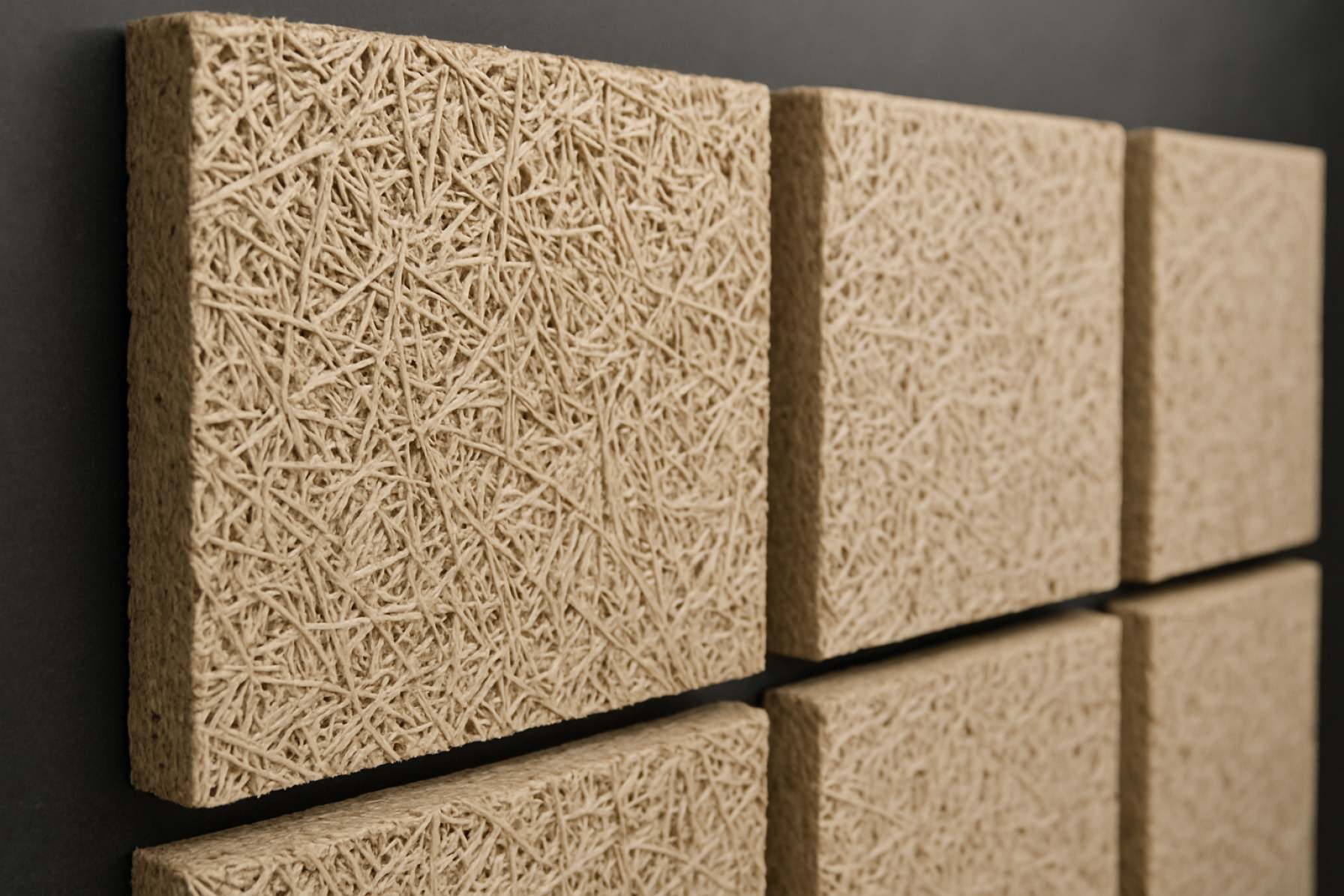Table of Contents
- Executive Summary: Key Takeaways & Industry Highlights
- 2025 Market Size, Growth Rate & Revenue Projections
- Major Manufacturers and Competitive Landscape
- Demand Drivers: Sustainability, Construction, and Acoustic Performance
- Emerging Manufacturing Technologies and Process Innovations
- Raw Materials: Sourcing, Costs, and Supply Chain Outlook
- Regulatory Standards and Environmental Certifications
- Regional Analysis: Leading Markets and Untapped Opportunities
- Future Trends: Digitalization, Customization, and Smart Panels
- Long-Term Forecast (2025–2029) and Strategic Recommendations
- Sources & References
Executive Summary: Key Takeaways & Industry Highlights
The wood wool acoustic panel manufacturing sector is positioned for steady growth in 2025, driven by rising demand for sustainable and high-performance building materials in both commercial and residential construction. These panels, composed primarily of wood fibers bound with cement or magnesite, are recognized for their superior sound absorption, thermal insulation, and environmentally favorable credentials. As governments and industries worldwide intensify their focus on green building practices and indoor environmental quality, the market for wood wool acoustic panels is experiencing notable expansion.
Major manufacturers such as Troldtekt A/S, Knauf Heradesign, and Savolit continue to innovate in panel design and production processes, emphasizing eco-friendly sourcing, efficient manufacturing, and product recyclability. In 2025, these companies are leveraging automation and digitalization to optimize production efficiency and reduce waste, aligning with broader industry trends toward sustainability and circular economy principles.
The sector is also responding to evolving architectural trends. Acoustic comfort is now a priority in schools, offices, public venues, and hospitality spaces, leading to increased specification of wood wool panels in new builds and renovation projects. Products are being tailored for improved fire resistance, moisture durability, and design versatility, meeting diverse regulatory and aesthetic requirements.
Regionally, Europe remains the largest market, underpinned by stringent EU regulations on energy efficiency and indoor environmental standards. However, adoption is accelerating in North America and parts of Asia-Pacific as awareness of acoustic solutions grows and building codes evolve. Manufacturers are expanding their distribution networks and investing in regional production facilities to serve these high-potential markets more effectively.
Looking ahead, the wood wool acoustic panel industry is anticipated to benefit from ongoing urbanization, increased infrastructure spending, and the proliferation of green building certifications such as LEED and BREEAM. Strategic partnerships with architects, designers, and construction firms are expected to further embed wood wool panels in mainstream building practices. Overall, the outlook for 2025 and the coming years remains robust, with innovation, sustainability, and regulatory alignment at the core of industry momentum.
2025 Market Size, Growth Rate & Revenue Projections
The global market for wood wool acoustic panel manufacturing is positioned for continued growth into 2025, driven by increasing demand for sustainable and high-performance building materials. Projections for 2025 estimate the market size to reach approximately USD 650–750 million, with a compound annual growth rate (CAGR) between 5% and 7% over the next few years. This growth is underpinned by expanding applications in commercial, educational, and residential construction, as well as heightened awareness of acoustic comfort and eco-friendly solutions.
Key manufacturers such as Troldtekt A/S, Knauf, and Heradesign are reporting strong order books and continued capacity expansions in Europe and Asia. These companies are investing in advanced production lines and sustainable sourcing of raw materials to meet both regulatory requirements and customer expectations for environmental performance. The integration of recycled wood fibers and low-emission binders is expected to further boost product appeal in green building markets.
The commercial sector remains the largest end-user, representing over 60% of the total demand in 2025, as offices, educational institutions, and public buildings increasingly specify wood wool panels for their acoustic properties and design versatility. Additionally, the penetration of wood wool panels into residential and hospitality segments is rising, supported by evolving architectural trends and stricter building codes focused on indoor environmental quality.
Regionally, Europe continues to account for the majority of market share, with robust adoption in Scandinavian and Central European countries where wood wool panel technology originated and where sustainability standards are high. However, Asia-Pacific is forecast to be the fastest-growing region through 2027, with China and India showing significant investments in green infrastructure and modern construction practices. Manufacturers such as Troldtekt A/S and Heradesign have announced plans to increase their presence in these emerging markets.
Looking ahead, the outlook for wood wool acoustic panel manufacturing remains positive. The sector is anticipated to benefit from ongoing innovation in product design, integration with smart building technologies, and alignment with circular economy principles. As end-users and regulators place greater emphasis on life-cycle performance and carbon footprint, wood wool panels are likely to see increased specification in both new construction and renovation projects through 2025 and beyond.
Major Manufacturers and Competitive Landscape
The global wood wool acoustic panel manufacturing sector in 2025 is shaped by a competitive landscape featuring both longstanding industry leaders and emerging regional players. The market’s growth is driven by increasing demand for sustainable, high-performance acoustic solutions in commercial, educational, and residential construction. Companies are responding by investing in advanced manufacturing processes, eco-friendly materials, and innovative product designs.
Among the most prominent manufacturers is Knauf, a Germany-based conglomerate with a significant presence in the wood wool segment through its subsidiaries. Knauf’s Heradesign brand is recognized for its focus on environmentally friendly, mineral-bound wood wool panels, widely used across Europe and expanding into other regions. Another major player, Troldtekt A/S (Denmark), specializes exclusively in wood wool acoustic panels, emphasizing cradle-to-cradle certifications and carbon-neutral production processes, thus capitalizing on the rising demand for green building materials.
In addition to European leaders, the sector includes key participants such as CELENIT S.p.A. (Italy), which continues to expand its global distribution network and invest in product innovation to enhance acoustic performance and fire resistance properties. Tectum Inc., part of the Armstrong World Industries group in the United States, is strengthening its market position through integration with Armstrong’s extensive supply chain and R&D capabilities, targeting growth across North America.
Manufacturers in Asia are increasingly influential. Chinese companies, such as MagMatrix, are scaling production capacities and broadening their export reach, offering cost-competitive alternatives while gradually improving product certifications to meet international standards.
Competition within the sector is intensifying due to several factors:
- Growing awareness of sustainable construction practices, pushing manufacturers to obtain environmental certifications and enhance transparency in sourcing and production.
- Rising investments in automated manufacturing lines for better consistency, scalability, and cost efficiency.
- Product differentiation based on aesthetics, acoustic performance, and fire safety, with companies launching customizable and multi-functional panel solutions.
- Global expansion strategies, including partnerships and local production setups in fast-growing regions such as the Middle East and Asia-Pacific.
Looking ahead to the next few years, the competitive landscape is expected to see further consolidation among established players and the rise of niche manufacturers targeting specific applications. The sector will likely experience continued innovation, particularly around circular economy solutions and digital integration for improved specification and installation. Strategic collaborations and sustainability leadership will remain the key differentiators in the wood wool acoustic panel manufacturing market.
Demand Drivers: Sustainability, Construction, and Acoustic Performance
The demand for wood wool acoustic panels is experiencing robust growth, primarily driven by a confluence of factors centered on sustainability, construction sector trends, and heightened performance requirements for indoor environments. As of 2025, the global push for sustainable building materials is a key catalyst. Wood wool panels, composed of wood fibers bonded with mineral binders like cement or magnesite, are recognized for their natural composition, recyclability, and low embodied energy, aligning with green building certifications and circular economy objectives. Manufacturers such as Troldtekt and Heradesign emphasize the renewable sourcing of raw materials, improved resource efficiency, and product recyclability in their corporate sustainability commitments.
Construction industry momentum further accelerates demand, especially in regions with expanding infrastructure and building activity. Urbanization trends and government-backed sustainability mandates—such as energy-efficient construction codes in Europe and North America—have led to increased specification of wood wool panels in schools, healthcare facilities, offices, and public buildings. These panels are valued not only for their environmental credentials but also for compliance with modern fire safety and indoor air quality standards. Leading producers like Knauf and Cembrit are responding by scaling up manufacturing capacity and diversifying product portfolios to cater to new construction and retrofitting projects.
Acoustic performance remains a critical driver as awareness grows around the impact of sound quality on occupant well-being and productivity. Wood wool panels offer exceptional sound absorption characteristics, making them increasingly preferred in educational, commercial, and cultural venues. The demand for flexible interior environments, collaborative workspaces, and hybrid learning facilities is fueling the integration of these panels into architectural designs. Companies such as Troldtekt and Heradesign have invested in laboratory testing and certification to demonstrate compliance with stringent acoustic and environmental standards, supporting their adoption in prestigious and high-performance building projects.
Looking ahead to the next several years, the outlook indicates continued expansion. Growth is expected to be particularly strong in regions with evolving green building regulations and in sectors prioritizing occupant comfort and sustainability. Advances in manufacturing technology—such as automation and digital design customization—will likely enhance production efficiency and enable the development of new aesthetic and functional variants. As the construction industry adapts to changing regulatory landscapes and heightened environmental expectations, wood wool acoustic panels are expected to gain further traction as a preferred solution for sustainable and high-performing interior spaces.
Emerging Manufacturing Technologies and Process Innovations
The wood wool acoustic panel manufacturing sector in 2025 is witnessing a dynamic evolution driven by sustainability imperatives, automation, and advanced material science. Traditional wood wool panels—made from shredded wood fibers bound with mineral cements—are being reimagined through innovative manufacturing processes that enhance acoustic performance, environmental credentials, and aesthetic versatility.
One significant trend is the integration of automated mixing and molding systems. Manufacturers are increasingly deploying robotic arms and precision dosing equipment to optimize the consistency of wood wool-cement mixtures, reducing human error and material waste. For example, Troldtekt A/S, a major player in the European market, has invested in automated production lines that not only speed up throughput but also improve product uniformity and traceability.
Another key innovation is the utilization of alternative, eco-friendly binders. Some manufacturers are experimenting with magnesium-based cements and biopolymer binders, which offer lower embodied carbon compared to traditional Portland cement. These new formulations can enhance moisture resistance and further improve the sustainability profile of wood wool panels. Heraklith, for instance, has reported ongoing R&D into such binders, aiming to bring next-generation panels to market in the coming years.
Digitalization is also influencing manufacturing workflows. Advanced sensors and IoT-enabled monitoring systems are being adopted on production floors to enable real-time quality control—tracking parameters like fiber length, binder ratio, and curing humidity. This approach not only minimizes defects but also facilitates data-driven process optimization. Companies such as Knauf Insulation are leveraging these tools to enhance operational efficiency and meet stringent acoustic and fire performance standards.
Furthermore, modularity and customization capabilities are expanding, with computer-aided design and manufacturing (CAD/CAM) systems allowing for bespoke panel geometries, surface textures, and integrated mounting features. This aligns with the growing demand from architects and designers for tailored acoustic solutions that double as design elements.
Looking ahead, the outlook for wood wool acoustic panel manufacturing is robust. The sector is expected to benefit from increasing regulatory pressure for sustainable building materials, coupled with heightened demand for healthy and adaptable indoor environments. Manufacturers investing in process automation, digitalization, and green chemistry are poised to set new benchmarks in both product performance and environmental stewardship over the next several years.
Raw Materials: Sourcing, Costs, and Supply Chain Outlook
The sourcing and cost management of raw materials are central to the wood wool acoustic panel manufacturing sector in 2025, with supply chain dynamics influenced by sustainability imperatives and regional forestry practices. The primary raw materials—wood wool (typically derived from fast-growing softwood species such as spruce or pine), Portland cement, and water—are selected for their acoustic and fire-resistant properties. Manufacturers prioritize wood sourced from sustainably managed forests, with several prominent producers adhering to certification schemes like FSC® to meet increasing environmental and regulatory requirements.
Sourcing wood wool involves close partnerships with forestry operations, especially in Europe, where leading manufacturers such as Heraklith and Knauf AMF operate. These companies have invested in local and regional supply chains to mitigate risks associated with long-haul transport and to ensure traceability. In 2025, timber supply from European forests remains relatively stable, but the industry is alert to potential volatility due to factors such as climate-driven events (e.g., pest outbreaks, wildfires) and evolving EU forestry policies that could restrict available harvest volumes.
Portland cement, another key input, is sourced from established regional suppliers. The sector is under pressure to decarbonize, with major manufacturers like CEMEX and Holcim advancing lower-carbon cement options. These innovations may influence the composition and pricing of acoustic panels in the coming years, particularly as manufacturers seek to reduce the environmental footprint of their products.
Cost-wise, the wood wool acoustic panel sector has seen moderate increases in raw material prices through 2023–2024, mainly driven by higher energy costs, logistical challenges, and inflationary pressures in timber and cement markets. For 2025, pricing is expected to stabilize, assuming no major disruptions in forestry output or cement production. However, supply chain managers remain vigilant, adopting digital tracking systems and diversifying supplier bases to enhance resilience.
Looking ahead, the supply chain outlook is shaped by the dual imperatives of sustainability and cost efficiency. Manufacturers such as Troldtekt and HERADESIGN are investing in closer integration with certified timber suppliers and exploring alternative binder materials to further reduce embodied carbon. The sector is well-positioned to navigate raw material risks, provided it continues to prioritize certified sourcing, invest in supply chain transparency, and collaborate with upstream partners.
Regulatory Standards and Environmental Certifications
The regulatory landscape for wood wool acoustic panel manufacturing in 2025 continues to evolve, driven by increasing emphasis on environmental sustainability, indoor air quality, and circular economy principles. Manufacturers are required to comply with a range of international, regional, and national standards that govern both the production processes and the end-product characteristics. Key regulations pertain to emissions, use of formaldehyde-free binders, and responsible sourcing of raw materials.
One of the most significant frameworks impacting manufacturers is the European Union’s Construction Products Regulation (CPR), which mandates CE marking for acoustic panels, ensuring compliance with essential safety and environmental performance requirements. This includes adherence to EN 13168, the European standard that specifies performance criteria for wood wool boards, including thermal conductivity, reaction to fire, and mechanical properties. In parallel, the EU’s push towards the European Green Deal and Circular Economy Action Plan is prompting manufacturers to prioritize products with lower embodied carbon and enhanced recyclability.
Environmental certifications have become a vital market differentiator and are often prerequisites for inclusion in green building projects. Certifications such as the Forest Stewardship Council (FSC) and Programme for the Endorsement of Forest Certification (PEFC) attest to the responsible sourcing of timber used in wood wool panels. Leading manufacturers, including Knauf AMF and Troldtekt, highlight their FSC and PEFC certifications, reflecting a commitment to sustainable forest management.
Furthermore, low-emission certifications such as the Blue Angel (Germany) and GREENGUARD (USA) are increasingly sought after for wood wool acoustic panels, assuring compliance with stringent limits on volatile organic compound (VOC) emissions and contributing to improved indoor air quality. Manufacturers like Troldtekt and Heradesign actively promote their adherence to these standards, catering to the growing demand in public buildings, schools, and healthcare facilities, where air quality is paramount.
Looking ahead, regulatory trends point toward even stricter eco-design requirements and the integration of life cycle assessment (LCA) methodologies into product declarations. Environmental Product Declarations (EPDs), verified to EN 15804, will become increasingly critical in 2025 and beyond, as specifiers and architects demand transparent environmental impact data throughout the product’s life cycle. Industry leaders such as Troldtekt already provide EPDs for their wood wool products, setting a benchmark for transparency and accountability within the sector.
Regional Analysis: Leading Markets and Untapped Opportunities
The global wood wool acoustic panel manufacturing sector is witnessing dynamic shifts in regional demand and production capabilities as of 2025, driven by changing construction trends, sustainability priorities, and governmental regulations. Europe continues to be the dominant market, benefiting from stringent energy efficiency and green building standards. Countries such as Germany, Sweden, and the Netherlands lead in both the adoption and manufacturing of wood wool panels, propelled by robust investments in eco-friendly construction and renovation projects. Leading European manufacturers like Knauf Heradesign and Saint-Gobain have expanded their product lines, leveraging advanced automation and sustainable sourcing to meet growing local and export demands.
In North America, the United States and Canada are witnessing an uptick in wood wool acoustic panel usage, primarily in commercial, educational, and healthcare construction. The push for low-emission materials and LEED-certified buildings is fostering greater acceptance of natural fiber-based panels. Local manufacturers, as well as subsidiaries of European firms, are scaling up production and distribution. For example, Armstrong World Industries has incorporated wood wool panels into its acoustic solutions portfolio, responding to rising architectural requirements for sustainable sound management.
Asia-Pacific presents a mix of established and emerging opportunities. While Japan and Australia have steady demand rooted in strict building standards and design trends favoring natural materials, China and India represent high-potential, yet underpenetrated, markets. Rising urbanization, government investments in public infrastructure, and increasing environmental awareness are expected to stimulate growth. Domestic producers are gradually adopting European production techniques and machinery. Companies such as Owens Corning report increased interest in wood wool-based solutions across the region, especially for educational and multipurpose public spaces.
In contrast, Latin America, the Middle East, and Africa remain relatively untapped. However, local initiatives promoting sustainable construction, particularly in Brazil, the UAE, and South Africa, are likely to create new demand pockets through 2025 and beyond. Partnerships between global manufacturers and regional construction firms are a key trend to watch, as they facilitate technology transfer and market access.
Looking forward, the outlook for wood wool acoustic panel manufacturing is shaped by regulatory alignment, supply chain localization, and technological innovation. As more regions implement green building mandates and favor biobased, recyclable materials, leading and emerging markets alike are expected to see sustained or accelerated panel adoption, with manufacturers investing in new facilities and R&D to capture these opportunities.
Future Trends: Digitalization, Customization, and Smart Panels
The future of wood wool acoustic panel manufacturing is being shaped by intensified digitalization, increased demand for customization, and the emergence of smart panel technologies. As the industry moves into 2025 and beyond, manufacturers are leveraging digital tools to optimize production, expand design possibilities, and integrate smart functionalities that address evolving market needs.
Digitalization is rapidly transforming the manufacturing landscape for wood wool acoustic panels. Leading producers are investing in advanced automation systems, computerized numerical control (CNC) machinery, and digital design platforms. These technologies streamline production workflows, enabling high precision in panel sizing, edge detailing, and surface finishing. For instance, global manufacturers such as Troldtekt and HERADESIGN have publicized their implementation of digitalized production lines to improve efficiency, minimize material waste, and ensure consistent product quality.
Customization is another defining trend. Architects and designers increasingly seek bespoke acoustic solutions that align with specific aesthetic and acoustic requirements. In response, manufacturers are expanding their portfolios to offer a broader range of colors, surface textures, and patterns. Digital printing and automated cutting allow for tailored panel geometries and graphics, supporting unique project identities. Troldtekt and HERADESIGN have introduced online configurators and project support tools, making it easier for clients to specify custom dimensions, finishes, and even integrate lighting or ventilation features within the panels.
Looking ahead, the integration of smart technologies is poised to redefine the capabilities of wood wool acoustic panels. Research and pilot projects are exploring the incorporation of embedded sensors for air quality monitoring, humidity regulation, and even interactive soundscaping. While such features are in the early stages of market introduction, manufacturers are signaling interest in smart panel development as part of their innovation roadmaps. For example, Knauf, the parent company of HERADESIGN, has highlighted smart building materials as a strategic focus, indicating that the coming years may see hybrid products that combine traditional acoustic performance with digital connectivity.
With sustainability and healthy indoor environments remaining key drivers, the convergence of digitalization, customization, and smart functionalities is expected to accelerate. This positions wood wool acoustic panels not only as functional building materials, but as adaptable, intelligent components within future green and smart building ecosystems.
Long-Term Forecast (2025–2029) and Strategic Recommendations
The wood wool acoustic panel manufacturing sector is poised for notable transformations from 2025 through 2029, driven by increasing demand for sustainable building materials, regulatory pressures, and advances in production technology. The sector’s outlook is shaped by a combination of environmental imperatives, urbanization trends, and innovation in acoustic solutions.
Industry leaders are expecting continued growth in construction and renovation activities, particularly in Europe and Asia-Pacific, where green building standards are becoming more stringent. Companies such as Troldtekt and Heradesign are expanding their product portfolios to meet these evolving standards, emphasizing panels with enhanced recyclability, low emissions, and cradle-to-cradle certifications. These trends are likely to intensify, as governments implement stricter mandates for indoor air quality and embodied carbon, incentivizing the adoption of wood wool panels for both new builds and retrofit projects.
Manufacturers are also investing in automation and digitalization to boost efficiency and reduce production costs. Integration of Industry 4.0 technologies—such as process monitoring, smart logistics, and automated quality control—will become increasingly prevalent among producers seeking to scale operations and maintain competitiveness. Leading suppliers like CELENIT are expected to leverage these innovations to expand capacity and optimize resource use, supporting more resilient supply chains.
On the product development front, the next several years are likely to see a proliferation of custom-designed panels with advanced acoustic performance, fire resistance, and aesthetic versatility. Collaboration with architects and interior designers is set to intensify, as manufacturers respond to demand for integrated acoustic solutions tailored to diverse environments, from schools and offices to cultural venues. Troldtekt and Heradesign have already introduced modular and design-forward collections, a trend that is anticipated to accelerate sector-wide.
Strategically, manufacturers should prioritize investment in R&D for bio-based binders and low-impact processes, anticipate evolving regulatory frameworks, and deepen partnerships across the construction value chain. Expanding regional manufacturing hubs, particularly in fast-growing markets in Asia and Eastern Europe, will be critical to meeting localized demand efficiently. Companies that align their innovation and sustainability agendas with these macro trends are well positioned to capture growth opportunities through 2029 and beyond.






